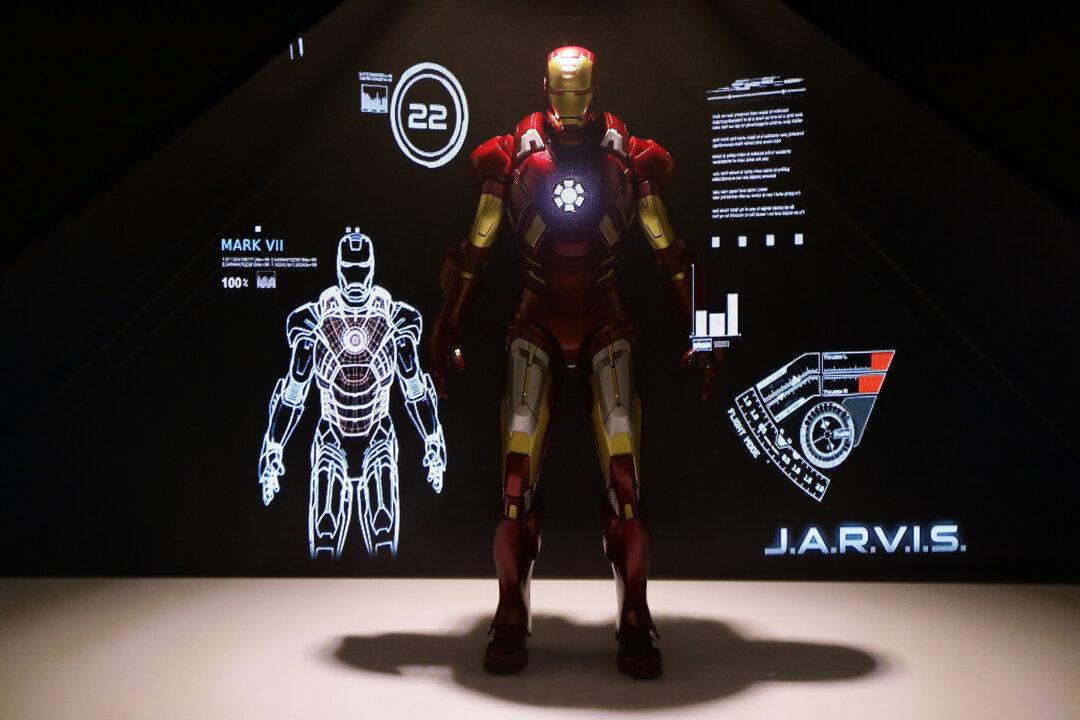The Pentagon is looking for new prototypes of an “Iron Man suit.”
The suit will come equipped with bionic limbs, head-to-toe armor, and live data feeds, among other cutting-edge parts.
“We’re taking the Iron Man concept and bringing it closer to reality,” Brian Dowling, a former Army captain who is working on the concept, told the LA Times.
The U.S. Special Operations Command started taking ideas for the suit from private companies, academics, and government labs earlier this year.
Two conferences have already been held where potential bidders demonstrated their products.
The metal suits would be basically impossible to penetrate with bullets and shrapnel.
The formal name for the “Iron Man suit” is Tactical Assault Light Operator Suit (TALOS).
“We sometimes refer to it as the ‘Iron Man’ suit, frankly, to attract the attention, imagination and excitement of industry and academia,” said Michel Fieldson of the U.S. Special Operations Command in a statement. “We’re hoping to take products we’re developing in several technology areas and integrating them into a consolidated suit to provide more protection for the [special operations forces].”
Because of the complexity of the suits, multiple contractors will likely work together on the project, Fieldson said.
Usually a prime contractor is picked and given the design requirements. Then the contractor comes up with the solution. Not in this case.
“In this case, the government will be the lead integrator, and we‘ll look to work with traditional or nontraditional partners in industry and academia who are innovative,” Fieldson said. “We’ll leave no stone unturned.”
The goal is to have the first suit ready for full field testing in four to give years.
Top scientists from across the U.S. are working on the project, including labs such as the Massachusetts Institute of Technology.
MIT engineers are working on a liquid body armor made of magnetorheological fluids that “transform from liquid to solid in milliseconds when a magnetic field or electrical current is applied,” according to an Army statement.
The suit is also slated to have subsystems that can monitor body and skin temperatures, as well as heart rates and hydration levels.
“[The] requirement is a comprehensive family of systems in a combat armor suit where we bring together an exoskeleton with innovative armor, displays for power monitoring, health monitoring, and integrating a weapon into that — a whole bunch of stuff that RDECOM is playing heavily in,” said Lt. Col. Karl Borjes, a Army Research, Development and Engineering Command science advisor assigned to SOCOM, in a statement.
“They want an Iron Man-like suit; they’ve been quite open about that,” said Adarsh Ayyar, an engineer at BAE Systems, one of the defense contractors seeking to build a working exoskeleton prototype. “You won’t get all of it. It’s not going to fly. But I think it’s doable.”
The Pentagon has actually been exploring ‘Iron Man’ technology since the late 1980s, according to Brookings University, after it noticed that civilians began using computers more and more, and increasingly carrying them on their bodies (such as cell phones in pockets).
“Starting in 1991, the Army began to explore how it could use such commercial technologies to turn the infantry soldier into a complete weapons system (as opposed to a soldier carrying various weapons),” Peter Singer of Brookings writes in a blog post. “The plan of the Land Warrior (a program developed then) was to link together on the solder’s body various small computers, sensors, and equipment that could be bought off the shelf.”
The Land Warrior project included a rifle with thermal vision sight, a video camera, and a digital compass.
“This allowed the soldier not only to fight at night and in bad weather, but also use their rifle to beam back what they were seeing to their squad mates and commanders,” says Singer.
The soldier controlled the array of technology with a small control unit, akin to a computer mouse.
The Land Warrior program was derailed because it sucked up a lot of power, and because of the weight of batteries and gear. So it ended in 2007.
The systems and technology, though, were rolled into a new program called Future Force Warrior, for which much of the work is done at the Institute for Soldier Nanotechnologies at MIT.
Development of the Iron Man suit is just like the Land Warrior program, but an update to go along with all the technology advancement since then--or as Singer puts it, “updated and sexed up.”
“For example, while the gun in the old system was planned to be the venerable old M-16, the Future Force Warrior will carry a new ‘Weapon Subsystem,’ that crosses a machine gun with a missile launcher,” he said. “Most likely using the Metal Storm electrical system, it will shoot either bullets or tiny 15 mm explosive rockets.”
“The combination of Future Force’s various sensors will give soldiers the equivalent of Iron Man’s ‘phera sense,’ or what is known in military circles as ‘augmented reality,’“ said Singer. ”They will be able to sense the real world in a much more enhanced way than ever possible before.
“For example, when coming to a door in a building, a regular soldier just sees an obstacle. With Future Force sensors, they will also see the door with their left eye, but as they look at it through the clear view screen with right eye, a thermal image will be overlaid it, allowing them to know whether someone is waiting right behind it. Or, the screen might flash a warning from the chemical sensors that explosives are in the vicinity of the door, signaling a booby trap.”
However, some analysts believe that the look toward newer technology represents a misunderstanding after Iraq and Afghanistan.
“When the U.S. military entered the global war on terror, it was infatuated with technology and believed that it wins wars,” said Andrew Bacevich, a retired Army colonel who now, as a Boston University professor, is critical of recent wars. “The experience in Iraq and Afghanistan ought to have destroyed any such expectation, but this [project] suggests it is still true.”





